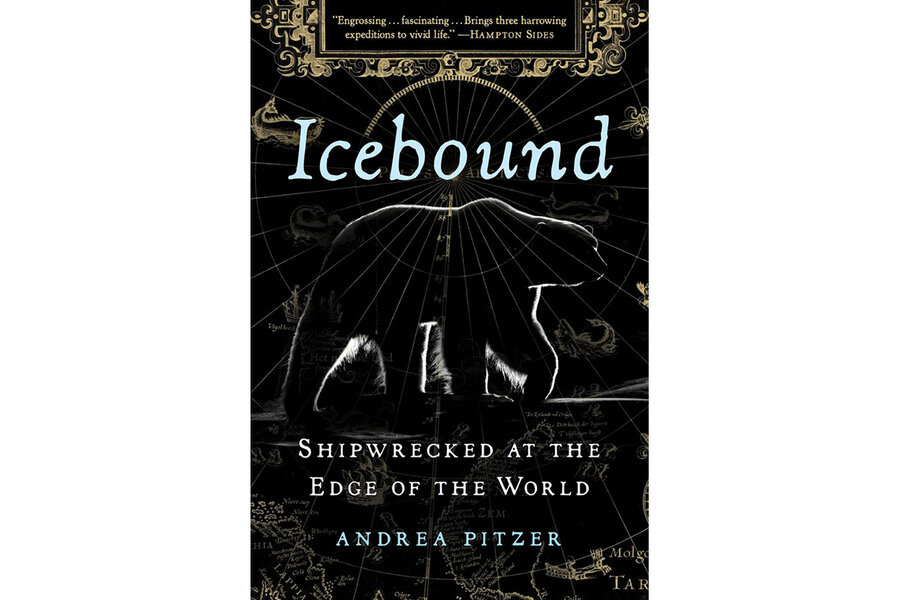Dutch explorers courted disaster in efforts to find a Northwest Passage
Loading...
Early expeditions into the Earth’s polar regions were never so successful as when they failed.
Sir John Franklin’s journey in search of a Northwest Passage to the Pacific in 1845 ended disturbingly; his ships were crushed by ice and the entire party of more than 100 men perished. His calamity drew public attention. Likewise, the nearly two-year-long ordeal of Ernest Shackleton and his crew, who were trapped in ice floes and stranded during an attempt to reach Antarctica, remains infamous today.
Less well known – but just as harrowing – are the voyages of Dutch navigator William Barents during the late 16th century, which are painstakingly chronicled in journalist Andrea Pitzer’s new book “Icebound: Shipwrecked at the Edge of the World.”
To set the stage, Pitzer explains that in the last years of the 16th century, merchants in the Netherlands had become obsessed with finding a northern shortcut to the Far East. They wanted to compete with Portuguese traders, who dominated the circuitous southern route around the Cape of Good Hope. Barents, who had been fascinated by maps as a child and went on to complete an atlas of the Mediterranean region as a young cartographer, was an ideal candidate to lead explorations: He was drawn to the Arctic, where, according to legend, warm seas existed beyond the vast tracts of ice.
The crew sailed north “in fear and wonder to pierce the veil of the unknown world,” Pitzer writes, but “a staggering array of ice in various sizes and shapes” forced the expedition to head home. But Barents’ appetite was only whetted. He undertook another voyage a few years later, which was beset by weeks of foul weather, drownings, and deadly polar bear attacks. The crew mutinied and the ringleaders were hung. The unfortunate expedition returned to Amsterdam.
Unwilling to call it quits, Barents mounted a third expedition in 1596, which ended even more disastrously. The men were “phenomenally unprepared to overwinter in the Arctic,” Pitzer writes, lacking winter clothing and even a rudimentary knowledge of local conditions. They constructed a cabin out of driftwood and hunkered down to wait out the interminable winter on shore hoping that spring melt would free their ship.
The longest stretch of the book involves a day-by-day account of their ordeal based on an exhaustive diary kept by ship’s officer Gerrit de Veer. The monotony of their lives – punctuated by moments of terror – is chillingly told. The crew experienced bloody battles with bears, the stench of scurvy, and the dispiriting blackness of the polar winter and their struggle with hunger as supplies dwindled. It’s a darkly fascinating tale about a venture that appears today – and must have seemed to many at the time – sheer folly. Why did they do it?
Neither de Veer nor the author probes deeply into the motives of the crew members, nor of Barents himself, who remains an oddly opaque figure throughout the book. Surely the Dutch navigator – a true child of the Age of Exploration – was eager to expand the frontiers of geographical knowledge and to win glory for himself and wealth for his newly formed nation.
But fame and fortune don’t fully account for why these men courted death to venture into the most inhospitable region on Earth. Nor do they explain why readers are powerfully drawn to these polar exploration stories, which seem to evoke an allure similar to that of extreme sports and of war.
In “Icebound,” readers can vicariously experience what it would be like to push themselves to their physical and psychological limits. And they can wonder about how they would fare in similar circumstances. Indeed, Pitzer’s earlier book, a global history of concentration camps, suggests that she is fundamentally interested in how extreme adversity affects those who experience it, both for good and for ill. Barents and his crew met the inhospitable Arctic conditions head on – though perhaps less with courage (which would imply that they had a choice in the matter) than with an unshakeable determination to go on.
This is not a book for the squeamish. Pitzer’s prose is beautifully wrought, but unrelenting. Yet it is ultimately hopeful – not just because the survivors stage an astonishing escape, but because we watch them struggle together right up to death’s door to achieve it. Theirs is a tale of good triumphing in extremis.
“Icebound” is a tribute to Barents, “the patron saint of devoted error, living the consequences of his mistakes.” It is also a tribute to the seemingly limitless human capacity to confront darkness and endure.








